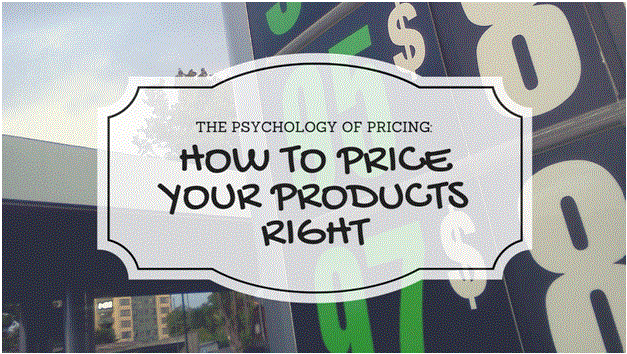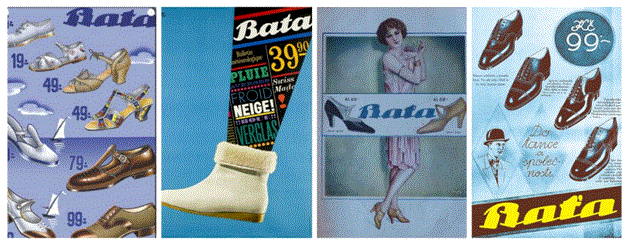Have you ever wondered why a bag is tagged $299.99 when it can simply be priced as $300? This is what marketers refer to as odd pricing – one of the most effective strategies used in psychology pricing. You often see products with “decimal 99” prices, right?
And, you wonder why they can’t simply be rounded off. Actually, products and services are oddly priced for a reason – to attract consumers and help retailers sell more. Odd pricing and other pricing tactics must not only cover your daily expenses, they must also compel the consumers to make purchases.
Because product pricing greatly contributes to a consumer’s buying decision, you must price your products strategically. In pricing your products or services, there’s a key factor you must not miss – buyer psychology.
It will save you from lost sales opportunities and customers. Ready to get to know the relation between psychology and pricing? Let’s get started.
About Psychology Pricing

Because we humans are emotional beings by nature, we usually make decisions based on our emotions. With psychological pricing, unusual pricing strategies are employed to appeal to the consumers’ emotional side and compel them to make purchases. This pricing tactic creates an illusion for products or services to appear cheaper than they are in reality.
Psychological pricing deals with the consumer’s way of perceiving things – including price ranges and differences. For example, a lady consumer shops for a bag and sees a $199 bag and a $200 bag. Most likely, the consumer will compare the two prices and think that she’ll save money if she buys the $199 bag when in fact, it almost costs the same as the $200 bag.
The human mind processes figures and prices from the left-most digit. Let’s look at the example above; the $199 bag appeared to be a lot cheaper and more reasonably priced than the $200 bag when in fact it’s only a dollar cheaper. Also, oddly as it may seem, consumers have been found out to be attracted to prices ending in “9” and “decimal 99” prices.
This kind of psychological pricing started even in the late 1800s. A Czechoslovakian shoe making company established in 1897 by the Bat’a siblings has been using this strategy in pricing their shoe products. And, after over a century in the shoe making industry, they are continuously growing strong in producing shoes for countries all over the world.

Photos credit to https://www.pinterest.com/batashoes/120-years-of-bata-advertising/
Psychological pricing is still evident up to this modern age. Marketers and retailers still use the power of “9” in their pricing strategies for a variety of products and services you can imagine.
It may be one of the oldest pricing tricks in the book, but it still works wonders. However, this isn’t the only pricing tactic you can employ; there’s a lot more you can try.
5 Best Psychological Pricing Strategies

Besides the popular “decimal 99” pricing tactic, there are other more that are now being employed by different retailers and marketers to compel consumers to make purchases. So, below are a few of the psychological pricing strategies you can consider trying:
1. Price anchoring
One way to sell a $1500 bag, for example, is to place it right next to a $4500 bag. Why? Anchoring or relying on a first piece information during decision making is a cognitive bias.
Place standard items with premium or expensive ones to create a bargain for consumers. They will compare both the items plus their values and perceive that the standard item is a bargained option.
2. Reframing/ split pricing
Lower price values naturally attract consumers. So, splitting a product’s normal price makes it appear cheaper to consumers; but they still pay the normal rate in reality.
Split your normal product prices into installments. For example, you can make a $1200 item appear visually cheaper by pricing it as “$100 / month”. A $100 appears cheaper than a $1200 price.
3. Pricing in small fonts
According to theory, the human mind, by nature, connects physical measure to numerical measure. Humans associate the font size of a reference price with its value.
Sale prices written in a small font perform better than sale prices written in a large and bold font. However, you have to strike the balance. Don’t use too little fonts, but avoid giant texts either.
4. Simple Pricing
According to a study on Consumer Psychology, prices with extra syllables, decimals, or commas are perceived to be higher by consumers. It appears to be more expensive. Take a look at the following prices, for example, $3,999.00, $3,999, and $3999. Although they are in fact with almost the same value, they don’t perform the same. The $3999 performed best.
5. Slashed sale pricing
Although “decimal 99” prices still sell the most, another pricing tactic was able to outperform and outsell them somehow; they are referred to as “slashed sale prices.” Examples of slashed sale prices are: “From $60 to $35!”, “Was $50, now only $25!”, “$19 down from $40”. To meet the best of both worlds, incorporate “decimal 99” prices with slashed sale prices.
Besides having a well-designed and developed e-commerce website, product pricing must also be prioritized greatly. Without proper pricing, you prospective customers will not be compelled to make a purchase, and will instead leave.
Know the psychology behind pricing your products right to attract more consumers to your e-commerce site. Consider the psychology pricing guidelines above and compel shoppers to make purchases from your online store.
You May Like To Read:
- How To Save Money via Coupons and Promo Codes?
- 20 Best Products to Sell Online in 2024
- 5 Top Strategies for Small Businesses to Market Their Products
Author Bio: Japs Buidon is a fincyte contributor, social media expert and SEO from Always Open Commerce, an Orlando ecommerce Company. He loves electronics as well as hiking.














